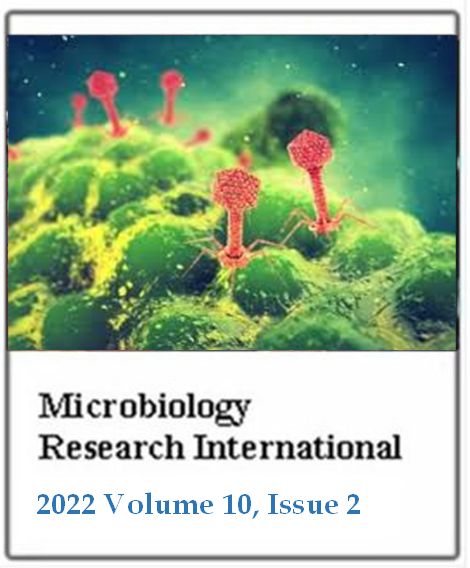Review of pathogenesis phases of Marek's disease in a susceptible host
Takele WorkuMicrobiology Research International
Published: July 19 2022
Volume 10, Issue 2
Pages 10-13
Abstract
Marek’s disease is caused by an oncogenic alphaherpesvirus, a common lymphoproliferative disorder-inducing agent usually characterized by mononuclear cellular infiltrates particularly T-cell lymphomas in various visceral organs and peripheral nerves. Natural infection of Marek’s disease virus occurs through the respiratory mucosa inhalation of the virus shed from infected chickens (fecal-oral route). The respiratory tract of the chicken is the natural entry for Marek's disease virus. Marek’s disease virus has long been of interest as a model organism, particularly concerning the pathogenesis and immune control of virus-induced lymphoma. Post inhalation of Marek’s disease virus, the early cytolytic phase occurs in B cells of the bursa of Fabricius, spleen, and thymus. Marek’s disease has four pathogenesis phases in the susceptible birds those are: an early cytolytic phase within 2 to 7 days post-infection which delineates as semi-productive lytic viral replication in lymphocytes. This phase is followed by a latency phase that occurs between 7 and 10 days post-infection in the CD4+ T cell subset resulting in systemic viral dissemination. Cutaneous viral infection can occur as early as 4 dpi and eventually results in fully productive viral replication and shedding. MDV reactivation in CD4+ T cells initiates a late cytolytic and immunosuppressive phase starting around 18 days of post-infection. Finally, a proliferative phase around 28 days post-infection is characterized by the formation of visceral tumors that originate from CD4+ T cells lymphoma. This review article aims to address the pathogenesis phase of Marek’s disease infection, in susceptible birds.
Keywords: Marek’s disease virus, pathogenesis, early cytolytic infection, latent infection, late cytolytic infection, transformation phase, CD4+ T cells lymphoma.
Full Text PDF
